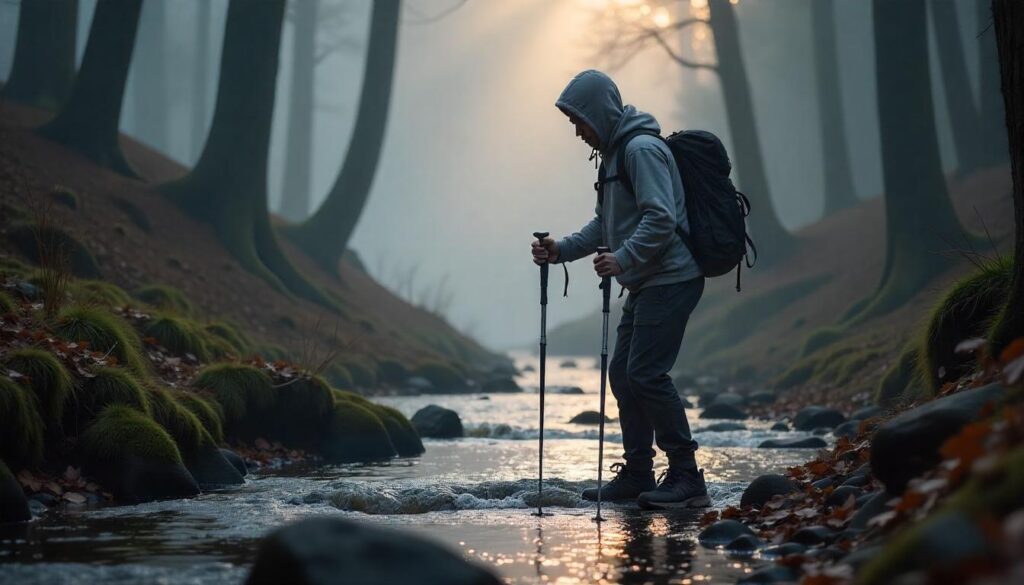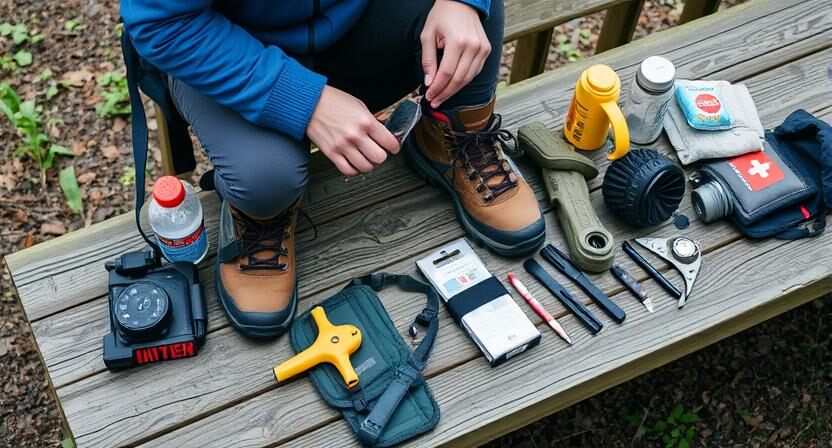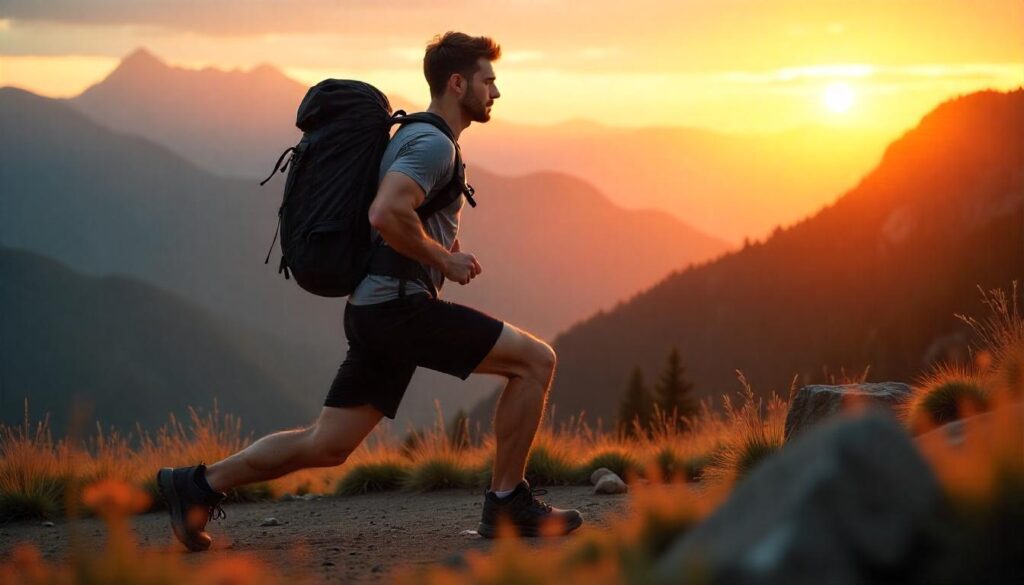
New Hampshire is a hiker’s paradise, offering everything from challenging mountain summits to family-friendly scenic trails. Whether you’re looking for breathtaking fall foliage, rugged White Mountain peaks, or waterfall hikes, there’s a trail for you.
Why Hike in New Hampshire?
New Hampshire is home to the White Mountains, scenic lakes, and dense forests, making it one of the best states for outdoor adventures. It offers:
- Diverse Terrain – From rocky mountain ridges to lush forest paths and gorgeous waterfalls.
- Year-Round Hiking – Each season offers a unique experience, from fall foliage to snow-covered trails in winter.
- Hiking for All Levels – Whether you’re a beginner, an experienced hiker, or a family with kids, you’ll find a suitable trail.
If you’re ready to hit the trails, this guide covers the best hikes in New Hampshire, categorized by region and difficulty level.
Best Hiking Trails in New Hampshire by Region
Best Hikes in the White Mountains
The White Mountains are home to New Hampshire’s most iconic trails, offering challenging climbs and breathtaking views.
1. Mount Lafayette & Franconia Ridge Loop
- Distance: 8.6 miles (loop)
- Difficulty: Hard
- Why Hike It?
This is considered one of the best hikes in New Hampshire and a bucket-list trail for many. The route takes you across three peaks—Little Haystack, Mount Lincoln, and Mount Lafayette—all offering breathtaking panoramic views of the surrounding White Mountains. The trail also features exposed ridgelines, rocky scrambles, and alpine vegetation unique to high-elevation hikes in New England.
Hiking Tips:
- Start early in the morning to avoid crowds and secure parking.
- Dress in layers—temperatures at the summit can be 20-30°F colder than at the base.
- This is a strenuous hike—bring enough water, snacks, and trekking poles for support.
2. Mount Washington via Tuckerman Ravine Trail
- Distance: 7.9 miles (out & back)
- Difficulty: Very Hard
- Why Hike It?
Mount Washington is the highest peak in the Northeast (6,288 ft) and famous for its extreme weather and unpredictable conditions. The Tuckerman Ravine Trail is the most popular route, featuring steep inclines, rock scrambles, and dramatic cliffs.
Hiking Tips:
- Always check the weather forecast before hiking—Mount Washington has some of the world’s worst weather.
- The summit has a visitor center, a weather observatory, and a snack shop, making for a great resting spot.
- Carry a map and compass—fog and high winds can make navigation difficult.
3. Arethusa Falls Trail
- Distance: 2.8 miles (out & back)
- Difficulty: Moderate
- Why Hike It?
Arethusa Falls is the tallest waterfall in New Hampshire, plunging 140 feet into a scenic gorge. The trail is short but rewarding, passing through dense forests, wooden bridges, and rocky paths before reaching the stunning waterfall.
Hiking Tips:
- Visit in the spring or after rainfall for the most powerful waterfall flow.
- Wear waterproof hiking boots—some sections of the trail can be muddy.
- Consider adding Frankenstein Cliffs Trail for a more challenging loop hike.
Best Hikes in Southern New Hampshire
Southern New Hampshire offers shorter, more accessible hikes with stunning views.
4. Mount Monadnock via White Dot Trail
- Distance: 4.4 miles (loop)
- Difficulty: Moderate
- Why Hike It?
Mount Monadnock is one of the most climbed mountains in the world. It offers stunning 360-degree views from its open summit, making it a favorite among hikers.
Hiking Tips:
- Arrive early in the morning—this trail gets crowded, especially on weekends.
- Bring grippy hiking shoes—the rocky terrain can be slippery.
5. Pack Monadnock via Wapack Trail
- Distance: 3.2 miles (out & back)
- Difficulty: Moderate
- Why Hike It?
A quieter alternative to Mount Monadnock, this trail offers great summit views and a fire tower at the top for even better vantage points.
Hiking Tips:
- Ideal for sunrise and sunset hikes—the views are incredible during golden hour.
- The gradual incline makes it perfect for beginner hikers.
6. Pawtuckaway State Park Trails
- Distance: Varies
- Difficulty: Easy to Moderate
- Why Hike It?
This is a family-friendly hiking destination featuring scenic lakes, gentle forest trails, and rocky boulder formations.
Hiking Tips:
- Bring bug spray—mosquitoes can be annoying in summer.
- Don’t miss Boulder Field, a must-visit spot for rock climbers and nature lovers.
Scenic and Iconic Hikes in New Hampshire
7. Artists Bluff Trail
- Distance: 1.5 miles (loop)
- Difficulty: Easy
- Why Hike It?
This is one of the most photographed hikes in New Hampshire. The short but rewarding trail leads to a stunning viewpoint overlooking Echo Lake and Cannon Mountain.
Hiking Tips:
- Best hiked in fall for spectacular foliage views.
- Arrive early to find parking and avoid crowds.
8. Welch and Dickey Loop Trail
- Distance: 4.3 miles (loop)
- Difficulty: Moderate
- Why Hike It?
A classic White Mountain hike featuring rocky ridgelines, sweeping views, and diverse landscapes.
Hiking Tips:
- Hike counterclockwise for an easier ascent.
- Avoid after rainfall—the granite ledges can be slippery.
9. Flume Gorge Trail
- Distance: 2 miles (loop)
- Difficulty: Easy
- Why Hike It?
A unique nature walk featuring wooden boardwalks, waterfalls, and dramatic rock formations.
Hiking Tips:
- Ideal for families and beginners.
- Visit in the morning to enjoy the serene atmosphere before crowds arrive.
Best Hikes in New Hampshire by Difficulty Level
New Hampshire offers a diverse range of hiking trails, from gentle family-friendly paths to demanding summit treks. Whether you’re seeking a short nature walk, a moderate adventure, or a strenuous climb, this guide highlights the best hikes in New Hampshire based on difficulty level to help you choose the right one.
Easy & Family-Friendly Hikes

These trails are ideal for beginners, families with kids, and casual hikers looking to enjoy New Hampshire’s natural beauty without steep climbs or challenging terrain. Many of these hikes feature scenic views, waterfalls, and peaceful woodland paths that can be enjoyed year-round.
Mount Willard Trail
- Distance: 3.2 miles round trip
- Elevation Gain: 900 feet
- Difficulty: Easy
Why Hike It?
Mount Willard is one of the most rewarding short hikes in the White Mountains, offering breathtaking panoramic views of Crawford Notch at the summit. The trail is well-maintained and not too steep, making it perfect for beginners and families. Whether you’re hiking in the vibrant colors of fall, the lush greenery of summer, or experiencing the snow-covered winter wonderland, this trail is stunning in every season.
Hiking Tips:
- Arrive early as parking at Crawford Depot fills up quickly.
- Bring micro spikes in winter for better traction on icy patches.
- This is a great introductory hike for kids or those new to hiking.
Diana’s Baths Trail (Great for kids and families!)
- Distance: 1.3 miles round trip
- Elevation Gain: 100 feet
- Difficulty: Very Easy
Why Hike It?
Diana’s Baths is a short and scenic trail leading to a series of cascading waterfalls, making it one of the best family-friendly hikes in New Hampshire. The wide and well-maintained path is easy to navigate, even for young children and strollers. In the summer, the natural pools provide a refreshing spot to cool off, while the fall brings beautiful foliage around the flowing waters.
Hiking Tips:
- Best visited in spring or summer when water levels are higher.
- A small parking fee is required, so bring cash or a park pass.
- Wear waterproof shoes if you plan to wade in the pools.
Odiorne Point State Park Trails
- Distance: 2.3 miles
- Elevation Gain: 50 feet
- Difficulty: Easy
Why Hike It?
This coastal hiking trail offers stunning views of the Atlantic Ocean, historic WWII bunkers, and diverse wildlife. Unlike mountain hikes, this trail is flat and easy, making it ideal for families, birdwatchers, and those looking for a peaceful walk along the shore. If you’re looking for a scenic hike that’s different from the typical mountain trails, this is a must-visit.
Hiking Tips:
- Visit at low tide for the best tide pool exploration.
- Great for kids, but be cautious on the rocky sections near the water.
- Bring binoculars to spot seabirds and occasional seals.
Moderate Hikes for Adventure Seekers
These trails are for those who want more elevation gain, longer distances, and a bit of challenge. They offer a great balance between adventure and accessibility, making them ideal for hikers looking to take the next step beyond easy trails.
Welch and Dickey Loop Trail
- Distance: 4.4 miles round trip
- Elevation Gain: 1,778 feet
- Difficulty: Moderate
Why Hike It?
Welch and Dickey Loop is one of the most scenic hikes in New Hampshire, featuring expansive 360-degree views, rock scrambles, and open ledges. This hike is perfect for those who enjoy a challenge but aren’t quite ready for high peaks. The loop ensures that you experience different scenery throughout, with beautiful wildflowers in the summer and stunning foliage in the fall.
Hiking Tips:
- Hike counterclockwise for an easier ascent and gradual descent.
- Avoid in wet weather as the granite ledges become dangerously slippery.
- Great for leaf-peeping in the fall.
Lonesome Lake Trail
- Distance: 3.1 miles round trip
- Elevation Gain: 1,000 feet
- Difficulty: Moderate
Why Hike It?
This is a moderate hike with a huge payoff, leading to a beautiful alpine lake surrounded by mountains. Lonesome Lake is a great spot for picnics, swimming, and photography, especially in the summer. The well-maintained trail offers a steady but manageable incline, making it an excellent choice for hikers who want a bit of a workout but without the strain of a summit hike.
Hiking Tips:
- Start early in peak seasons, as parking fills up quickly.
- Consider bringing a swimsuit in summer if you want to cool off in the lake.
- Bug spray is essential in spring and summer due to mosquitos near the water.
Mount Major Trail
- Distance: 3.8 miles round trip
- Elevation Gain: 1,100 feet
- Difficulty: Moderate
Why Hike It?
Mount Major offers spectacular views of Lake Winnipesaukee from the summit, making it one of the most popular moderate hikes in New Hampshire. It’s a great half-day hike that provides a rewarding summit experience without being too strenuous. The trail is rocky in sections but well-marked, making it a favorite for families and casual hikers looking for an adventure.
Hiking Tips:
- The Brook Trail offers an easier route if you prefer a gradual ascent.
- The Main Trail is steeper but provides better views on the way up.
- Sunrise or sunset hikes here are incredible, but bring a headlamp for early/late treks.
Difficult & Summit Hikes

For experienced hikers looking for a challenge, these hikes feature high elevation gain, rocky terrain, and exposed summits. They are physically demanding but highly rewarding, offering some of the most breathtaking views in New England.
Presidential Traverse
- Distance: 19.8 miles
- Elevation Gain: 8,800 feet
- Difficulty: Very Difficult
Why Hike It?
The Presidential Traverse is a bucket-list hike for many adventurers, covering multiple peaks, including Mount Washington, Mount Adams, and Mount Jefferson. This long and physically intense hike rewards hikers with some of the most stunning ridgeline views in the entire Northeast. However, rapid weather changes and exposed terrain make it a serious challenge even for experienced hikers.
Hiking Tips:
- Check the weather forecast carefully before attempting this hike.
- Consider doing a two-day hike with an overnight stay at one of the AMC huts.
- Bring plenty of water, snacks, and layers, as conditions can change quickly.
Bondcliff Trail
- Distance: 9.2 miles round trip
- Elevation Gain: 3,100 feet
- Difficulty: Hard
Why Hike It?
Bondcliff Trail is one of the most scenic summit hikes in New Hampshire, offering iconic cliffside views. The dramatic drop-offs and ridge-line walking make this one of the best spots for photography and breathtaking vistas. It’s a remote hike, perfect for those who love solitude and wild landscapes.
Hiking Tips:
- Start early, as this hike takes a full day to complete.
- Pack extra layers, as temperatures can drop significantly at the summit.
- Best done in summer or fall to avoid icy conditions.
Best Hikes in New Hampshire for Each Season

New Hampshire offers breathtaking hiking experiences in all four seasons. From fiery autumn foliage to snow-covered peaks, each season transforms the landscape, offering unique challenges and rewards. Whether you love fall colors, winter adventures, spring waterfalls, or summer summit views, there’s a perfect trail for you.
Best Fall Foliage Hikes

New Hampshire’s fall foliage is world-renowned, attracting hikers from across the country. Mid-to-late October is the best time to witness the brilliant shades of red, orange, and gold covering the mountains and forests.
Mount Osceola Trail
- Distance: 6.4 miles (out & back)
- Difficulty: Moderate
- Why Hike It?
Mount Osceola offers incredible panoramic views of the White Mountains, making it one of the best hikes for fall foliage. As you ascend through dense hardwood forests, you’ll see vivid autumn leaves stretching across the valley below. The rocky summit provides a perfect photo spot, especially at sunrise or sunset. - Hiking Tips:
- Peak foliage season: Early to mid-October.
- Start early to secure parking, as this is a popular trail.
- Bring layers, as temperatures can drop quickly in the fall.
Kancamagus Highway Trails
- Distance: Various trails (ranging from 1-10 miles)
- Difficulty: Easy to moderate
- Why Hike It?
The Kancamagus Highway is a must-visit during the fall season. This scenic byway runs through White Mountain National Forest, featuring numerous short hikes leading to overlooks, waterfalls, and panoramic mountain views. Some of the best stops include Sabbaday Falls, Rocky Gorge, and Champney Falls Trail. - Hiking Tips:
- Expect heavy traffic on weekends during peak foliage.
- Visit during weekday mornings for a quieter experience.
- Pack a picnic and enjoy the views at one of the scenic pull-offs.
Mount Cube Trail
- Distance: 6.6 miles (out & back)
- Difficulty: Moderate
- Why Hike It?
This hidden gem is perfect for fall foliage lovers looking for a less crowded alternative to more popular hikes. The trail winds through colorful maple and oak forests, and the summit rewards hikers with breathtaking views of the Connecticut River Valley and the White Mountains. - Hiking Tips:
- Trail can be muddy after fall rains—wear waterproof hiking boots.
- Great for photographers looking to capture the fall colors.
- Bring a thermos of hot cider to enjoy at the summit.
Best Winter & Snowshoeing Hikes

Winter hiking in New Hampshire offers a magical experience, with snow-covered trees, frozen waterfalls, and peaceful trails. Many trails are also great for snowshoeing, making winter adventures accessible for all experience levels.
Mount Tecumseh Trail
- Distance: 5 miles (out & back)
- Difficulty: Moderate
- Why Hike It?
As one of New Hampshire’s 4,000-footers, Mount Tecumseh is a great winter challenge for intermediate hikers. The well-maintained trail has steady inclines, leading to a stunning snow-covered summit with views of Waterville Valley Ski Resort. - Hiking Tips:
- Microspikes or crampons are necessary for icy sections.
- Start early, as winter daylight hours are short.
- Dress in layers to prevent overheating while climbing.
Baldface Circle Trail
- Distance: 9.5 miles (loop)
- Difficulty: Difficult
- Why Hike It?
A serious winter adventure, the Baldface Circle Trail offers stunning alpine views but requires experience with winter conditions. The open ridge sections can be extremely windy, and proper gear is essential. If you’re up for the challenge, the 360-degree views of untouched snowfields make it worth the effort. - Hiking Tips:
- Avoid if snowstorms or high winds are in the forecast.
- Carry extra food, warm layers, and emergency supplies.
- Consider bringing trekking poles for better stability.
Lincoln Woods Trail

- Distance: 2.9 miles (out & back)
- Difficulty: Easy
- Why Hike It?
Perfect for beginners or families, the Lincoln Woods Trail follows an old railroad bed along the Pemigewasset River, offering a gentle hike through snow-dusted pines. This is a great place to try snowshoeing for the first time or enjoy a peaceful winter walk. - Hiking Tips:
- Great for families with kids or dogs.
- Bring hand warmers for extra comfort in the cold.
- Arrive early—this trail is popular with cross-country skiers.
Best Spring & Summer Hikes
Spring and summer bring lush greenery, flowing waterfalls, and clear summit views. The snow melts away, making trails easier to navigate, while longer daylight hours allow for full-day adventures.
Sabbaday Falls Trail (Great for waterfalls!)
- Distance: 0.7 miles (loop)
- Difficulty: Easy
- Why Hike It?
One of the most beautiful waterfalls in New Hampshire, Sabbaday Falls is a short and rewarding hike that’s perfect for all ages. The well-maintained path leads to a stunning series of cascades, surrounded by lush greenery in the spring and cool mist in the summer heat. - Hiking Tips:
- Very popular in the summer—visit early morning or late afternoon.
- Stay on designated paths to protect fragile vegetation.
- Bring a camera—this is one of the most photogenic spots in NH.
Mount Chocorua via Piper Trail
- Distance: 9.8 miles (out & back)
- Difficulty: Difficult
- Why Hike It?
One of New Hampshire’s most iconic peaks, Mount Chocorua offers panoramic views from its rocky summit. The Piper Trail is one of the best ways to reach the peak, featuring beautiful forested sections, waterfalls, and dramatic open ridges. - Hiking Tips:
- Start early, as this is a long and strenuous hike.
- Pack plenty of water, as the final stretch is exposed to the sun.
- Check the forecast—summit conditions can change rapidly.
Glen Ellis Falls Trail
- Distance: 0.6 miles (out & back)
- Difficulty: Easy
- Why Hike It?
If you love waterfalls, Glen Ellis Falls is a must-see in New Hampshire. This short and easy trail leads to a spectacular 64-foot waterfall, making it a perfect summer stop. - Hiking Tips:
- The rocky steps can be slippery—wear good hiking shoes.
- Great for families and beginners looking for a quick, scenic hike.
- Best visited in the morning to avoid summer crowds.
Essential Hiking Tips for New Hampshire Trails

Hiking in New Hampshire is an incredible experience, but the state’s unpredictable weather and rugged terrain demand proper preparation. Whether you’re a beginner or an experienced hiker, these essential tips will help ensure a safe and enjoyable outdoor adventure.
How to Prepare for NH’s Weather
New Hampshire’s weather can change dramatically within hours, especially in the White Mountains. A sunny morning can quickly turn into cold rain, strong winds, or even snow at higher elevations.
- Check the forecast before heading out. The Mount Washington Observatory provides real-time weather updates.
- Layer your clothing to adjust to temperature changes. Start with a moisture-wicking base, an insulating layer, and a waterproof shell.
- Plan for early starts—afternoon storms are common in the mountains.
- Pack rain gear even on sunny days; mountain storms can arrive suddenly.
Must-Have Hiking Gear
Carrying the right gear can mean the difference between a great experience and a dangerous situation. Here’s what you should always bring:
- Navigation: A physical trail map & compass or a GPS app (don’t rely solely on your phone).
- Footwear: Sturdy hiking boots or trail runners with good traction, especially for rocky and wet trails.
- Clothing: Moisture-wicking shirts, insulating layers, and rainproof outerwear.
- Food & Water: Bring extra snacks and at least 2 liters of water per person (a filter or purification tablets for refilling).
- Emergency Kit: Headlamp, first-aid kit, whistle, multi-tool, and emergency blanket.
- Trekking Poles: Helpful for steep descents and uneven terrain.
Wildlife & Safety Tips
New Hampshire’s forests are home to bears, moose, and other wildlife. Respect nature and follow these safety guidelines:
- Bears: Store food in bear-proof containers or hang it away from camp. Never leave food scraps on the trail.
- Moose: Keep your distance! A startled moose can charge unexpectedly.
- Leave No Trace: Stay on marked trails, carry out all trash, and avoid picking plants.
- Trail Safety: Hike with a buddy, let someone know your itinerary, and always carry a whistle for emergencies.
FAQs About Hiking in New Hampshire
What is the most scenic hike in New Hampshire?
Franconia Ridge Loop is widely considered the most scenic hike in New Hampshire. The jaw-dropping 360° views from the exposed ridge showcase the White Mountains in all their glory, making this a bucket-list hike for many.
What are the best beginner-friendly hikes in NH?
Some great beginner-friendly hikes include:
- Mount Willard Trail: Short but rewarding with a spectacular view of Crawford Notch.
- Diana’s Baths Trail: A quick and easy waterfall hike suitable for families.
- Odiorne Point State Park Trails: Coastal views with gentle terrain—perfect for first-time hikers.
Which hike offers the best summit views?
Mount Washington via Tuckerman Ravine Trail offers unparalleled summit views, as it’s the highest peak in the Northeast. For a slightly easier alternative, Mount Monadnock provides wide-open views with less extreme weather.
When is the best time to hike in NH?
- Fall (September–October): Peak foliage season with vibrant colors.
- Summer (June–August): Best for longer summit hikes and waterfalls.
- Winter (December–March): Great for snowshoeing and winter treks, but requires preparation.
- Spring (April–May): Melting snow creates high waterfalls, but expect muddy trails.
Conclusion – Plan Your New Hampshire Adventure
New Hampshire’s hiking trails offer something for everyone, from easy family-friendly strolls to demanding summit climbs. Whether you’re chasing fall foliage, winter snowfields, or summer waterfalls, there’s always a new adventure waiting.
What’s your favorite New Hampshire hike? Share your experience in the comments below!
Looking for more hiking guides? Check out our detailed guides on hiking for beginners, what to bring on a hike, and also don’t miss hiker rescue bill New Hampshire.
Ethan Marlowe is an experienced hiker and outdoor gear specialist based in Colorado. With over 7 years of hands-on experience trekking through the Rockies, Pacific Northwest, and East Coast trails, he delivers practical advice, expert gear reviews, and survival insights. His goal is to help hikers of all levels make smarter decisions on and off the trail.


